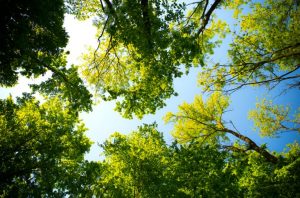Healthy N.J. Nurses Request: Protect Our Trees
 We come to you with a special request for the protection of New Jersey’s trees. Trees aid in the removal of greenhouse gases, filter water, produce oxygen and provide shade to homes, which can lower energy costs (The Nature Conservancy, 2020). Not only do they offer protection from the sun during outdoor activities, but most importantly, they are a home to many creatures big and small. The emerald ash borer [EAB] has already infested and destroyed well over one million ash trees in the state and could potentially destroy them all (New Jersey Department of Agriculture (NJDA, n.d.-a). Nearly one quarter of New Jersey’s forests have ash trees and there were over 24 million ash trees in the state (NJDA, n.d.-b).
We come to you with a special request for the protection of New Jersey’s trees. Trees aid in the removal of greenhouse gases, filter water, produce oxygen and provide shade to homes, which can lower energy costs (The Nature Conservancy, 2020). Not only do they offer protection from the sun during outdoor activities, but most importantly, they are a home to many creatures big and small. The emerald ash borer [EAB] has already infested and destroyed well over one million ash trees in the state and could potentially destroy them all (New Jersey Department of Agriculture (NJDA, n.d.-a). Nearly one quarter of New Jersey’s forests have ash trees and there were over 24 million ash trees in the state (NJDA, n.d.-b).
We are now facing the infestation with another invasive insect species, the spotted lanternfly [SLF]. Spotted lanternflies are sap suckers and a special threat to over 70 different plants [including birch, maple, black walnut trees and grapevines] (Penn State Extention, n.d.). If you see these creatures in any stage of growth, please make a report to the NJDA at www.badbug.nj.gov by clicking on the ‘report a siting’. This is especially important when you are out hiking or walking in parks. Take a photo and upload it with the report. They are already invading properties in NJ by the masses, floating around in pools and smashed all over the ground. Normally we would not step on bugs, but it is recommended in this case (NJDA, 2022). Knowing how to identify the egg masses is very important. This video teaches how to both identify and remove them https://youtu.be/aTRr1Oc6weE. It is a simple procedure. Removal will be especially important between this Fall and Spring, when these insects spread their egg masses on a multitude of surfaces.
If trees and forests have a positive impact on human health, then this aspect of ‘environment’ is relevant to nursing. If every nurse in New Jersey could recognize and destroy spotted lanternflies and remove their eggs when they see them (informing the public as well), together we could do a massive amount of good!
- Lisa Ertle, BSN, RN and the Healthy Nurse Healthy New Jersey Team
References
New Jersey State Department of Agriculture. (n.d.-a). What is the emerald ash borer? https://www.nj.gov/agriculture/divisions/pi/prog/whatiseab.html
New Jersey State Department of Agriculture. (n.d.-b). Spotted lanternfly. https://www.nj.gov/agriculture/divisions/pi/prog/pests-diseases/spotted-lanternfly/
New Jersey State Department of Agriculture. (2022, June 9). Spotted lanternfly information available at www.badbug.nj.gov. https://www.nj.gov/agriculture/news/ press/2022/approved/press220609.html
The Nature Conservancy. (2020, October 9). Cities stories: 6 ways trees benefit all of us: From a city to a vast forest, trees deliver when we help them to thrive. https://www.nature.org/en-us/what-we-do/our-priorities/build-healthy-cities/cities-stories/benefits-of-trees-forests/
Penn State Extension. (n.d.). Spotted lanternfly. Penn State University. https://extension.psu.edu/spotted-lanternfly
Penn State Extension. (2018, November 13). Destroying spotted lanternfly egg masses [Video]. YouTube. https://www.youtube.com/watch?v=aTRr1Oc6weE




